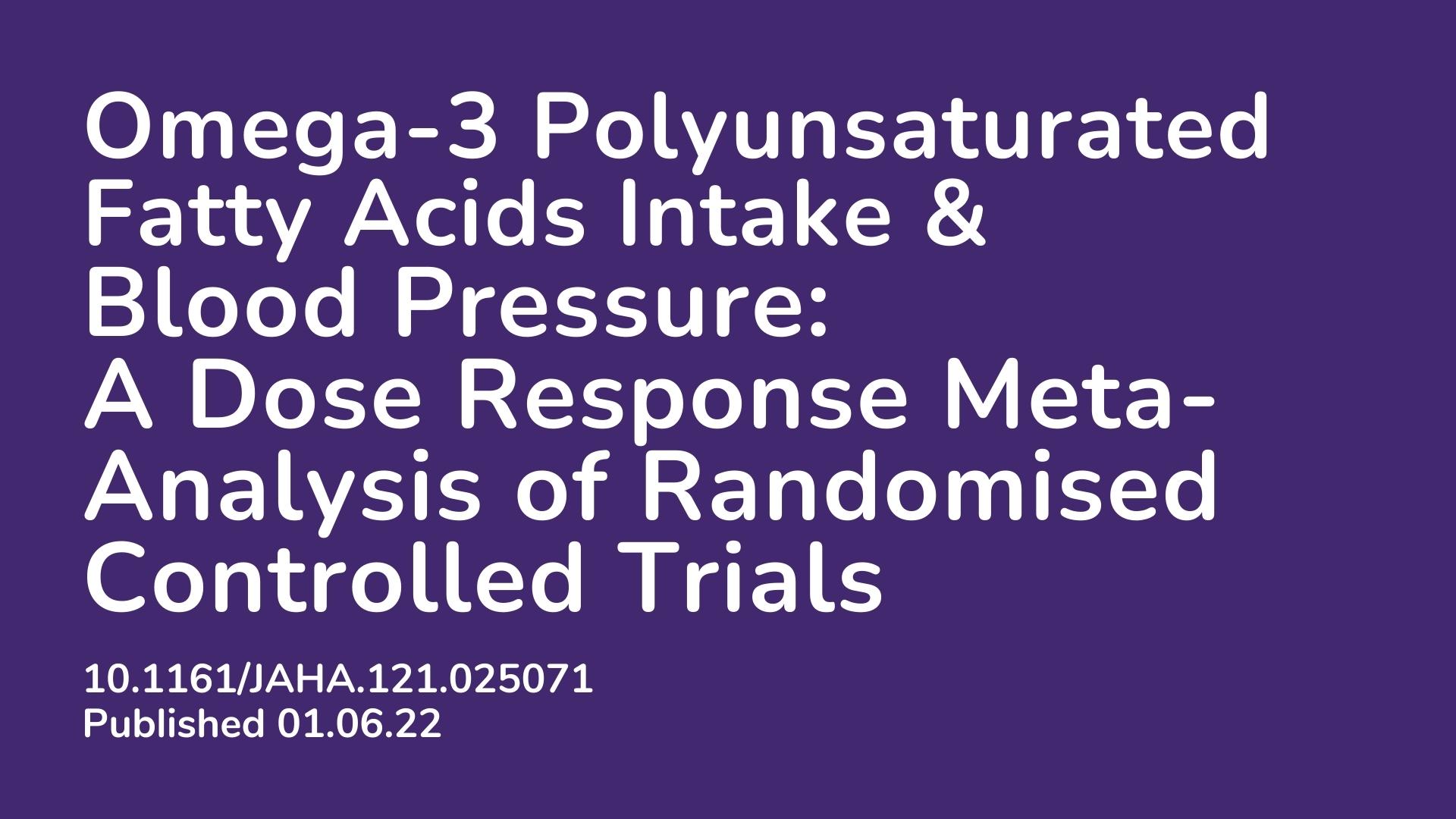Summary: Roughly 3 g/d of Omega-3 fatty acids (docosahexaenoic and eicosapentaenoic acid) appears to be the optimal daily dose to help lower blood pressure (BP), according to a meta-analysis published in the Journal of the American Heart Association.This meta-analysis included randomised controlled trials published until May 2021 which examined an association between Omega‐3 fatty acids and BP, in order to determine whether the outcomes on BP are dose dependent, as previous studies have not clearly established this. Following the researchers comprehensive literature review of the randomised controlled trials, this study showed that the optimal intake of docosahexaenoic and eicosapentaenoic acid for lowering BP is likely between 2 g/d and 3 g/d. Doses of these Omega-3 fatty acids above the recommended 3 g/d also showed to be associated with additional health benefits in individuals at high risk for Cardiovascular Diseases. The Omega-3 fatty acids identified in this meta-analysis are typically found in fatty fish such as tuna, salmon, trout and sardines. The Heart Foundation (Australia) recommends all individuals should aim to eat 2-3 servings of oily fish per week. This provides about 250–500 mg/day of docosahexaenoic and eicosapentaenoic acid, which according to this meta-analysis may not be a sufficient recommendation to lower BP. The Heart Foundation also recommends that Australian adults should aim for 1 g/day of plant- sourced omega-3 (alpha-linolenic acid).
Abstract:
Background: Current evidence might support the use of omega‐3 fatty acids (preferably docosahexaenoic acid and eicosapentaenoic acid) for lowering blood pressure (BP), but the strength and shape of the dose‐response relationship remains unclear.
Methods and results: This study included randomized controlled trials published before May 7, 2021, that involved participants aged ≥18 years, and examined an association between omega‐3 fatty acids (docosahexaenoic acid, eicosapentaenoic acid, or both) and BP. A random‐effects 1‐stage cubic spline regression model was used to predict the average dose‐response association between daily omega‐3 fatty acid intake and changes in BP. We also conducted stratified analyses to examine differences by prespecified subgroups. Seventy‐one trials were included, involving 4973 individuals with a combined docosahexaenoic acid+eicosapentaenoic acid dose of 2.8 g/d (interquartile range, 1.3 g/d to 3.6 g/d). A nonlinear association was found overall or in most subgroups, depicted as J‐shaped dose‐response curves. The optimal intake in both systolic BP and diastolic BP reductions (mm Hg) were obtained by moderate doses between 2 g/d (systolic BP, −2.61 [95% CI, −3.57 to −1.65]; diastolic BP, −1.64 [95% CI, −2.29 to −0.99]) and 3 g/d (systolic BP, −2.61 [95% CI, −3.52 to −1.69]; diastolic BP, −1.80 [95% CI, −2.38 to −1.23]). Subgroup studies revealed stronger and approximately linear dose‐response relations among hypertensive, hyperlipidemic, and older populations.
Conclusions: This dose‐response meta‐analysis demonstrates that the optimal combined intake of omega‐3 fatty acids for BP lowering is likely between 2 g/d and 3 g/d. Doses of omega‐3 fatty acid intake above the recommended 3 g/d may be associated with additional benefits in lowering BP among groups at high risk for cardiovascular diseases.
Article Publication Date: 01.06.22
DOI: 10.1161/JAHA.121.025071



